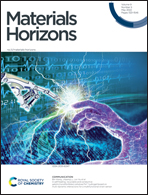Performance-oriented multistage design for multi-principal element alloys with low cost yet high efficiency†
Abstract
Multi-principal element alloys (MPEAs) with remarkable performances possess great potential as structural, functional, and smart materials. However, their efficient performance-orientated design in a wide range of compositions and types is an extremely challenging issue, because of properties strongly dependent upon the composition and composition-dominated microstructure. Here, we propose a multistage-design approach integrating machine learning, physical laws and a mathematical model for developing the desired-property MPEAs in a very time-efficient way. Compared to the existing physical model- or machine-learning-assisted material development, the forward-and-inverse problems, including identifying the target property and unearthing the optimal composition, can be tackled with better efficiency and higher accuracy using our proposed avenue, which defeats the one-step component-performance design strategy by multistage-design coupling constraints. Furthermore, we developed a new multi-phase MPEA at the minimal time and cost, whose high strength-ductility synergy exceeded those of its system and subsystem reported so far by searching for the optimal combination of phase fraction and composition. The present work suggests that the property-guided composition and microstructure are precisely tailored through the newly built approach with significant reductions of the development period and cost, which is readily extendable to other multi-principal element materials.



 Please wait while we load your content...
Please wait while we load your content...